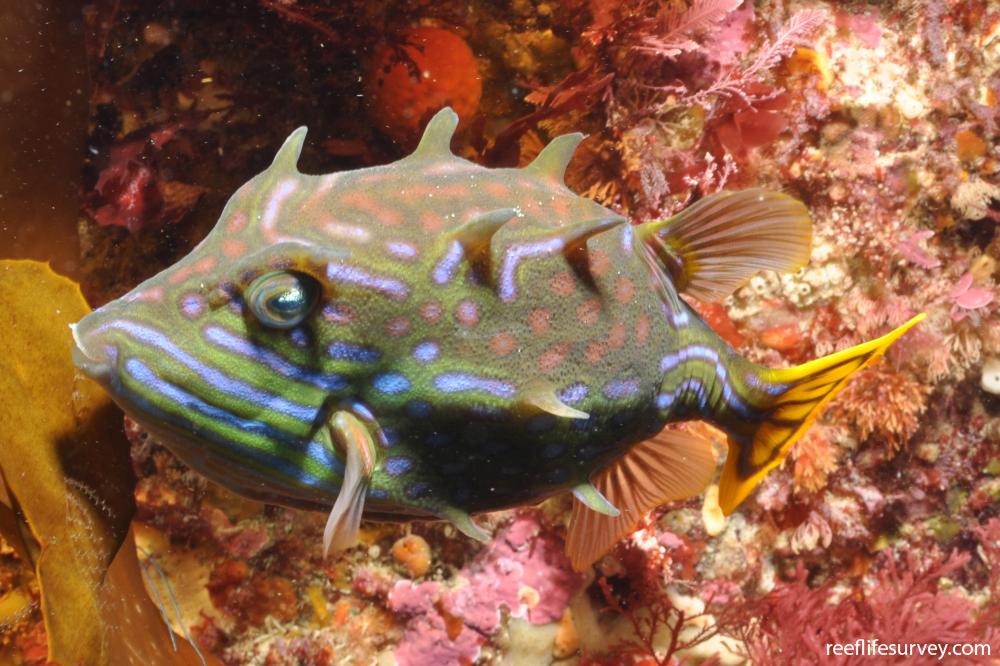Aracana aurita
Shaws cowfishSimilar Species
Same Genus
Distribution
Temperate Australasia
Description
Females and males differ distinctly in markings, both potentially confused with A. ornata, which has longer spines above the eyes and a more intricate pattern on the body. Females have a pattern of scribbled orange, black and white markings over the body, and the less common males have a distinctive arrangement of yellow, blue and white dots and stripes.
Information
Max Size: 20 cm
Sea Temperature Range: 10.1-23.3°C
Depth: 10 - 200 m
Habitat Generalization Index: 3.5
Also referred to as the SGI (Species Generalisation Index), this describes the habitat niche breadth of the species. Species with values less than 15 are found in a relatively narrow range of reef habitat types (specialists), while those over 25 may be found on most hard substrates within their range (generalists). Learn more here.
Conservation and Rarity
IUCN Status: Not Evaluated
Occurrence: Common (21.9% of sites)
Occurrence describes how often the species is found on surveys within its distribution. It is calculated as the % of reef sites surveyed by RLS divers across all the ecoregions in which the species has been observed
Abundance: Solitary (1 per transect)
Abundance is calculated as the average number of individuals recorded per RLS transect, where present.
Edit by: GJ Edgar. 2008. Australian Marine Life. New Holland, Sydney



















